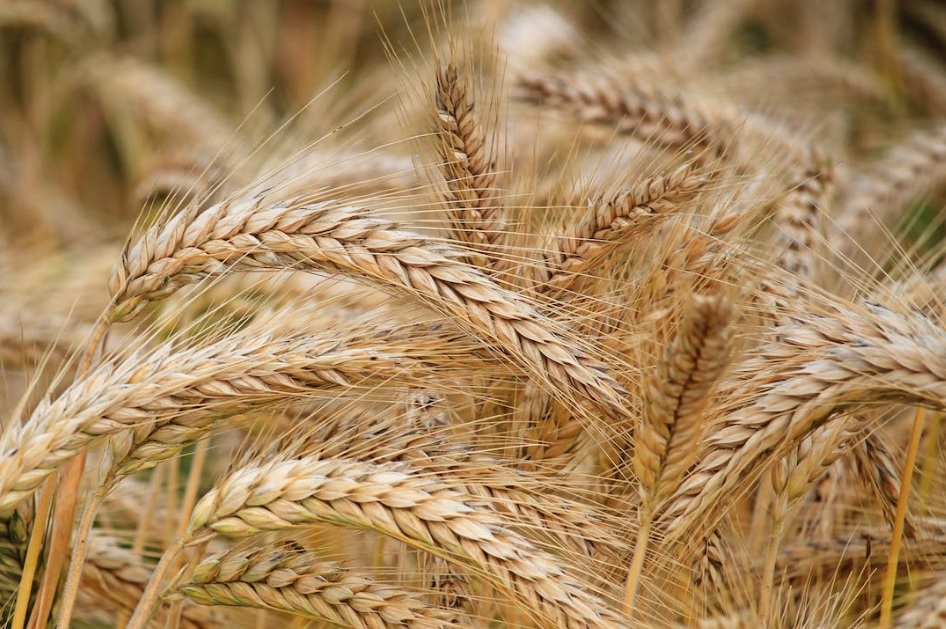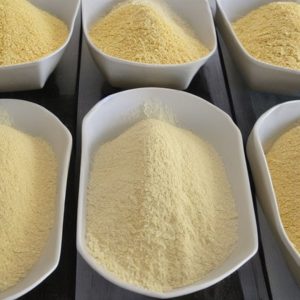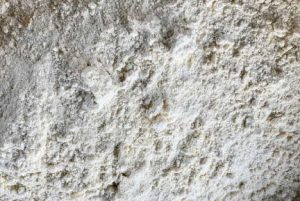
Last Updated on April 27, 2023 by Edible Alchemy Foods
The culinary world is full of different ingredients and recipes, each with its own unique flavor and texture. One of the many ingredients that can make or break a dish is flour. In particular, the difference between 00 flour and semolina flour can be a major factor in achieving the desired outcome of a recipe.
Today, we’ll explore the unique characteristics of both of these flours, and discover how they can be used in different ways to create masterful dishes.
Semolina Flour
Semolina flour is a coarsely ground flour made from durum wheat and is commonly used in the cuisines of many cultures all over the world. Durum wheat is a hard wheat, higher in protein and gluten than other types of wheat. It is most commonly used to make pasta, but it is also used in a variety of other recipes, including breads, cakes, and pastries.
Semolina flour is made by grinding the endosperm of durum wheat, which is the inner core of the grain. The endosperm is milled into small granules, which are then sifted until the desired coarseness is achieved. The coarser the semolina, the more protein it has. The finer the grind, the lighter the flour, the less protein it contains, and the finer the texture.
Semolina flour is often used to make pasta, because its higher gluten content gives pasta its chewy texture. Semolina flour is also used to make breads, cakes, and pastries. Semolina is a versatile ingredient, and can be used in a variety of recipes.
Semolina can also be used as a coating for fried foods, such as chicken nuggets and fish sticks. It adds a crisp texture to the food and helps to keep it from sticking to the pan. It can also be used to make polenta, a traditional Italian dish made with semolina, cheese, and other ingredients.
Semolina flour is a versatile ingredient that can be used in a variety of recipes. Its coarse texture, high protein content and versatility make it a great choice for both savory and sweet dishes. Whether you are making pasta, breads, or polenta, semolina flour is an excellent ingredient to have on hand.
00 Flour
00 flour, also known as double zero flour, is a soft Italian-style flour that is milled from durum wheat. It has a finer texture and higher protein content than all-purpose flour, which makes it ideal for pasta, pizza, and focaccia.
The main attribute of 00 flour is its fine texture, which is achieved through a unique milling process. It is typically milled in a stone mill, where the wheat is ground more slowly and carefully than with other types of flour. This process results in flour that is much more finely ground, with particles much smaller than those of all-purpose flour. It is also milled to a higher protein content than all-purpose flour, which gives it an elasticity and strength that makes it perfect for pizza dough.
The 00 flour is less likely to absorb too much water, which helps to keep the dough from becoming too sticky. It also gives pizza doughs and other baked goods a lighter texture and a more delicate flavor. It is also used for making pasta, as it creates a more elastic dough that can help to hold the shape of the pasta better.
Because of its finer texture and higher protein content, 00 flour is more expensive than all-purpose flour. While it is not necessary for everyday baking, it is worth the extra cost for certain recipes. If you are looking for a light, airy, and delicate texture for your pizza or pasta, 00 flour is the way to go.
Is 00 flour same as semolina?
Semolina and 00 flour (also known as double-zero flour) are both kinds of milled wheat and have many similarities. They are both made from durum wheat, which is a hard variety of wheat with a high protein content. Semolina is the coarser version of the two, while 00 flour is a finer, more powdery texture. They can both be used to make pasta, pizza dough, and other Italian recipes. However, they are often used in different ways.
For example, 00 flour is usually used to make a softer, more delicate dough, while semolina is usually used to make a firmer, chewier dough. Similarly, semolina is best for making gnocchi and other Italian dumplings, while 00 flour is best for making Italian breads and pastries.
The main difference between these two flours lies in the way they are processed. Semolina is made from the endosperm of durum wheat, which is made up of the starch and protein components. 00 flour, on the other hand, is made from the whole grain, including the germ and bran, resulting in a more nutrient-dense flour.
Is semolina or 00 flour better for pasta?
When it comes to making fresh homemade pasta, the type of flour you use can make a huge difference in the texture and flavor of the finished product. There are two popular types of flour used to make homemade pasta: semolina and 00 flour. But which one is better for making pasta?
Semolina flour is made from a special type of durum wheat, which is milled to a medium-coarse texture. The grains of semolina are quite large and coarse in comparison to the grains of other wheat flours, making semolina an ideal choice for making pasta. The texture of the flour makes it easier to roll out, and the coarser texture helps to give the finished pasta a more substantial texture. Semolina also has a slightly nutty flavor that can lend an interesting flavor to the pasta.
00 flour, also known as Italian “double zero” flour, is a very finely milled durum wheat flour. It is much finer in texture than semolina flour, and can give the finished pasta a very smooth texture. 00 flour is ideal for making pasta that is thin and delicate, as it’s easier to roll out and can give the pasta a more refined texture.
So which is better for making pasta – semolina or 00 flour? Ultimately, it depends on the type of pasta you are making and the desired texture and flavor. If you’re making a thicker, chewier pasta, then semolina is the way to go. But if you’re looking for a thin, delicate pasta, then 00 flour is a better option.
Regardless of which flour you choose, you’ll need to knead the dough until it is smooth and elastic before rolling it out. Once you’ve rolled the dough, you can cut it into the desired shape, boil it in salted water, and enjoy your homemade pasta. Whichever flour you decide to use, you can be sure that you’ll end up with a delicious and satisfying meal.
Read:
In conclusion
00 flour and semolina flour are both excellent choices for making pasta, pizza and bread. While 00 flour is finer and lighter in texture and colour, semolina flour is course and yellow in colour, making it ideal for rustic dishes. Both flours have their own advantages and disadvantages and can be used in a variety of recipes. Ultimately, it is up to the cook to decide which flour to use depending on the dish they are preparing.












